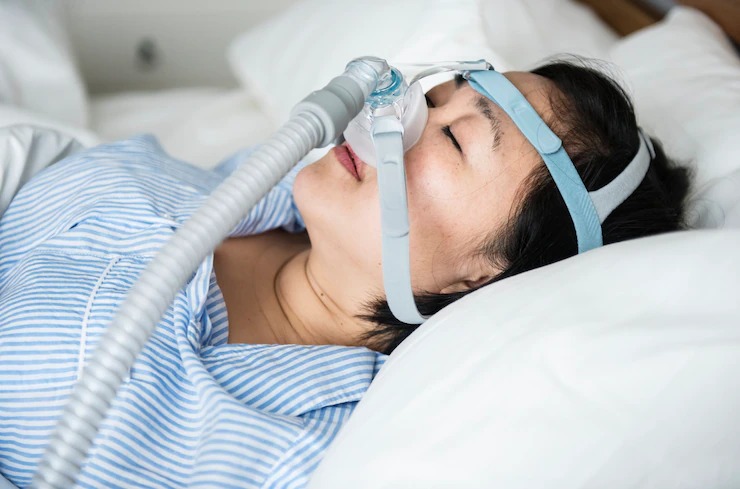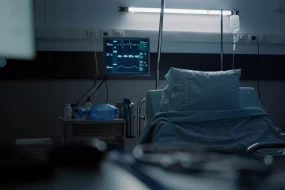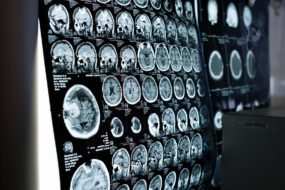
Evaluation done at UEMS (Mato Grosso do Sul State University) revisited results of polysomnographic exams realised at the HUMAP Sleep Medicine Laboratory and showed the prevalence on the diagnose of women with Obstructive Sleep Apnea Syndrome
In a research titled “Evaluation of Sleep Disorder Patients Submitted to Polysomnography“, a group of undergraduate medicine students from UEMS (Mato Grosso do Sul State University) obtained unprecedented results for pathology literature related to sleep quality, with emphasis on Obstructive Sleep Apnea Syndrome (OSAS). One of the study’s conclusions was the observation of unexpected prevalence of female individuals between the diagnosed patients. The study also confirmed relations between changes in sleep ability and compromise of neurologic capacities of individuals, stricken by Excessive Daytime Sleepiness (EDS).
For the analysis, 101 charts from patients over 18 years submitted to polysomnography were studied at the Maria Aparecida Pedrossian University Hospital’s Sleep Medicine Laboratory (HUMAP) between 2015 and 2019.
Upon investigation, it was possible to conclude that, opposing the existing bibliography regarding sleep disorders and, more specifically, about OSAS, women represented 58% of 77% of the patients diagnosed with the disorder. Also, more than half of the analysed medical charts concluded the presence of EDS in people with sleep apnea, a factor that interferes directly in cognitive ability, memorization and the individuals’ productivity.
“It is important to highlight the need for caution upon extrapolating the data for the whole population, in view that the evaluated patients may not reflect the reality of the general Brazilian population. Still, the results found may contribute for developing intervention strategies in the sense of preventing or attenuating the occurrence of sleep disorders, eliminating risk factors related to them”, highlightsmedical researcher Izabela do Santos in the article.

Quality of life and women sleep
The results still bring a light over a problem that begins outside the clinics: the gender inequality and double shift overload. Though, biologically, women have a more fragmented sleep, its prevalence on the results may be the first step to the observation that they’re increasingly more fatigued, which interferes directly in sleep quality.
The 42 year old nurse Márcia Oliveira was diagnosed with OSAS five years ago and since then has been living with incomplete and difficult sleep nights. The deficiency in fulfilling this vital function for the quality of life caused an aggravation of matters related to the diagnosis, like weight gain, daytime sleepiness, productivity reduction at work environment and even driving difficulties. “The first symptom was the snorting, followed by episodes in which I even stopped breathing and would wake up with a feeling of suffocation”, explained the nurse, who searches for treatment alternatives for her diagnosis to date. She still says there was an escalation of her disorder over the years. “I haven’t shown sleep apnea symptoms then, but when I started to have longer work shifts and had my second child, I started having trouble sleeping that, to date, really disturbs my productivity through the day, because I’m always sleepy”.

Picture: FreePick
Overweight and obesity protagonize development and aggravation of sleep disorders
Though the article raised unprecedented observations regarding sleep quality, it also reaffirmed widely addressed matters by clinic literature, like the interference of overweight and obesity in the disorders. Among the analysed population, 95.5% presented body mass index (BMI) above the recommended by public health regulators.
Considering that the lack of restful sleep provenly favours weight gain by causing hormonal disturbances related to hunger perception, the article shows that it is possible to say that patients diagnosed with Obstructive Sleep Apnea Syndrome can be found in a clinical scenario – sleeping difficulty makes it that they gain more weight and, at the same time, this gain contributes to the aggravation of the existing problems and the development of new ones, making it necessary to reinforce the role of medical attendance for correct diagnosis and effective treatments to minimise symptoms and even reaching a cure.
The article “Evaluation of Sleep Disorder Patients Submitted to Polysomnography”, authored by Izabela Dos Santos Barbosa, José Carlos Souza, Paulo de Tarso Guerrero Muller, Paola Oliveira Cavalcante Brito, Caroline Torres Augusto and Isabella Azevedo Cardeliquio Cantarelli, was published in full in the 3rd edition of the Brazilian Neurology and Psychiatry Journal (Revista Brasileira de Neurologia e Psiquiatria).





